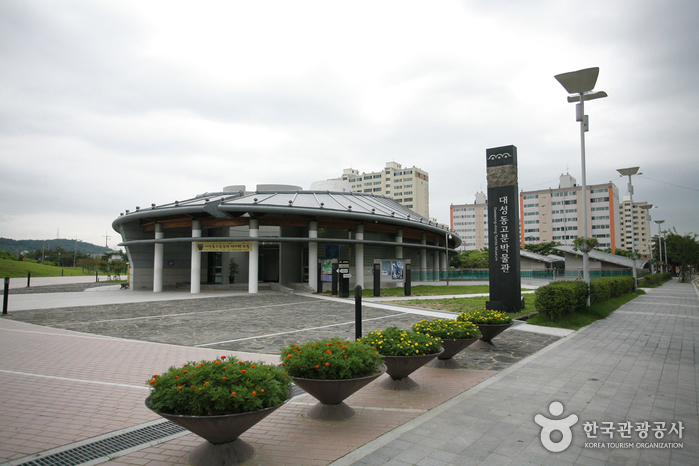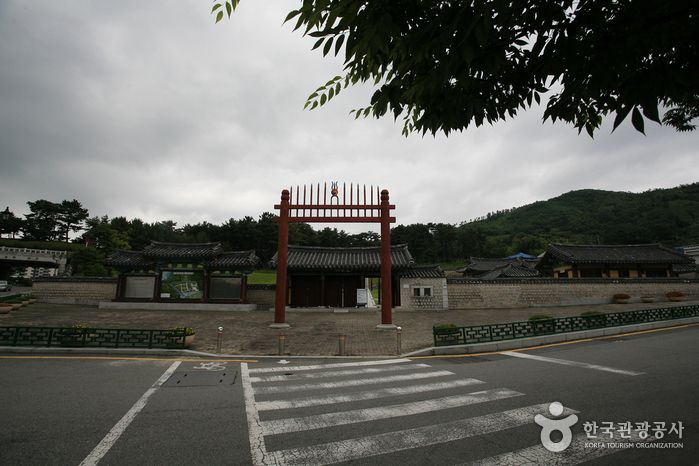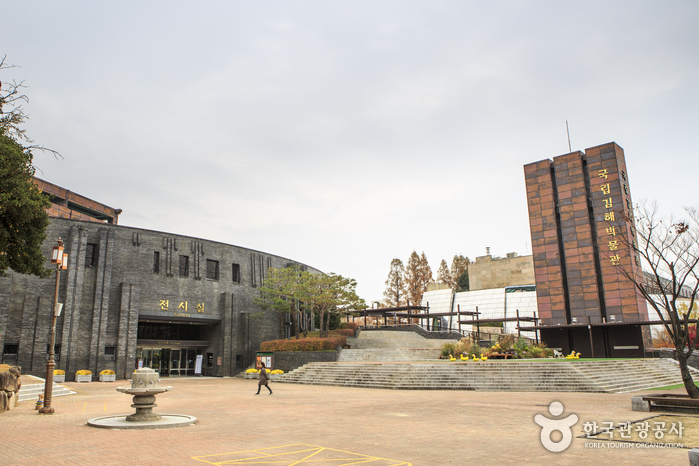Shinsegae Department Store - Gimhae Branch [Tax Refund Shop] (신세계백화점 김해)
18.2Km 2024-04-23
2F Lotte Outlet Gwanggyo Branch, 10, Docheong-ro, Yeongtong-gu, Suwon-si, Gyeonggi-do
-
E-Mart - Gimhae Branch [Tax Refund Shop] (이마트 김해점)
18.2Km 2024-04-23
2F, 10, Docheong-ro, Yeongtong-gu, Suwon-si, Gyeonggi-do
-
ET Land - Mega Mart Gijang [Tax Refund Shop] (전자랜드 메가마트기장)
18.3Km 2024-04-22
673, Gijang-daero, Ilgwang-eup, Gijang-gun, Busan
-
Mega Mart - Gijang Branch [Tax Refund Shop] (메가마트 기장점)
18.3Km 2024-04-23
673, Gijang-daero, Ilgwang-eup, Gijang-gun, Busan
-
Olive Young - Yangsan Mulgeum Branch [Tax Refund Shop] (올리브영 양산물금점)
18.3Km 2024-06-27
188, Cheongun-ro, Mulgeum-eup, Yangsan-si, Gyeongsangnam-do
-
Museum of the ancient tombs in Daseong-dong (대성동고분박물관)
18.5Km 2023-01-02
126, Gayaui-gil, Gimhae-si, Gyeongsangnam-do
+82-55-350-0401
The Museum of the ancient tombs in Daseong-dong displays artifacts unearthed from the four excavations of the Daeseongdong Tumuli. Highlighting often overlooked relics of the Geumgwan Gaya, the museum has three ground-floor exhibit halls and several underground auxiliary facilities. The main exhibits include a life-sized statue of a mounted soldier and a warrior statue, both recreated based on bones excavated from the tumuli of Yean-ri. The museum relies heavily on videos and dioramas to help visitors explore all the museum has to offer.
Ancient Tombs in Daeseong-dong, Gimhae (김해 대성동 고분군)
18.5Km 2020-04-02
126, Gayaui-gil, Gimhae-si, Gyeongsangnam-do
+82-55-330-3934
The tumuli in Daeseong-dong, located to the east of the Royal Tomb of Kim Suro, reflect the formation and development of the Gaya Era. The Daeseong-dong Tumuli are located in the center of the shell mounds of Hoehyeon-ri, the location of the founding of the Gaya Kingdom according to local legend.
The tumuli relics were excavated by researchers from the Kyungsung University Museum from 1990 to 1992 and were found to be the common burial ground of the dominant class of the Gaya Kingdom. On the hilltops, which were viewed as prime burial places, are the tombs of kings and rulers; on the slopes are the tombs of the lower classes.
A total of 136 tumuli were found in the Daesong-dong area. Further investigation of the tumuli revealed several important and interesting facts. First, from the end of the third century, men and horses were buried alive along with the dead. Also, weapons were bent and buried as well, with many of these artifacts being unearthed among the tumuli. Other materials found in the tumuli such as cylindrical bronze items, pinwheel-shaped bronze items, and jasper items showed that Gaya was involved in trade with Japan. The Daeseong-dong Tumuli is significant in that it gives a glimpse into the political and social structure of the Gaya Kingdom, and the cultural exchange between Korea, China, and Japan.
Tomb of Queen Consort of King Suro (김해 수로왕비릉)
18.5Km 2020-04-04
1, Garak-ro 190beon-gil, Gimhae-si, Gyeongsangnam-do
+82-55-338-1330
Tomb of Queen Consort of King Suro in Gusan-dong, Gimhae is the final resting place of Queen Heo, the Queen Consort of King Suro, the founder of Garak. The tomb dates all the way back to the Gaya dynasty and has been officially designated as Historic Site No. 74. Unlike many other ancient tomb mounds that are raised on flat land, Queen Heo's mound sits high upon a hill. In front of the tomb is Pasa Stone Pagoda, which its stones are known to have come from India.
Together with the Tomb of King Suro, the tomb preservation area was expanded in the 28th year of King Sejong’s reign (1446). Records indicate that the tombs were robbed over a century later during the Imjin War (1592-1598). The current headstone and plaque by the tomb was installed in the Joseon dynasty in the 25th year of King Injo's reign (1641).
Jangcheokgyegok Valley (장척계곡)
18.7Km 2021-08-02
544, Jangcheok-ro, Gimhae-si, Gyeongsangnam-do
+82-55-330-8741
Located at the foot of Sineosan Mountain in Gimhae, Gyeongsangnam-do, Jangcheokgyegok Valley is a natural recreation area that is surrounded by nature's beauty. The sound of running water coming from Dongbonggyegok Valley, the dense forest, and the huge rocks make this place a soothing place to relax. Located close to the valley are Jangcheok Village, Jangcheok Reservoir, and a site that's shaped like a wild boar descending from the mountain.
Gimhae National Museum (국립김해박물관)
18.8Km 2024-01-23
190 Gayaui-gil, Gimhae-si, Gyeongsangnam-do
The Gimhae National Museum was opened on July 29, 1998, in order to research and preserve the cultural heritage of the ancient kingdom of Gaya. The museum is at the foot of Gujibong Peak in Gimhae-si, the spot where the kingdom is believed to have been founded. The museum exhibits the cultural assets of Gaya, as well as cultural relics from the prehistoric age in the Busan and Gyeongsangnam-do areas, and the cultural heritage of Byeonhan, which was the foundation for the growth of Gaya.
The exterior of the museum is made using black bricks representing iron ore and charcoal famous during the Gaya Kingdom. There are two exhibition halls, while the walkway to the halls have approximately 1,300 artifacts in display.
![Shinsegae Department Store - Gimhae Branch [Tax Refund Shop] (신세계백화점 김해)](http://tong.visitkorea.or.kr/cms/resource/62/2885962_image2_1.jpg)
![E-Mart - Gimhae Branch [Tax Refund Shop] (이마트 김해점)](http://tong.visitkorea.or.kr/cms/resource/33/2885933_image2_1.jpg)
![ET Land - Mega Mart Gijang [Tax Refund Shop] (전자랜드 메가마트기장)](http://tong.visitkorea.or.kr/cms/resource/36/2884636_image2_1.jpg)
![Mega Mart - Gijang Branch [Tax Refund Shop] (메가마트 기장점)](http://tong.visitkorea.or.kr/cms/resource/33/2884633_image2_1.jpg)




 English
English
 한국어
한국어 日本語
日本語 中文(简体)
中文(简体) Deutsch
Deutsch Français
Français Español
Español Русский
Русский